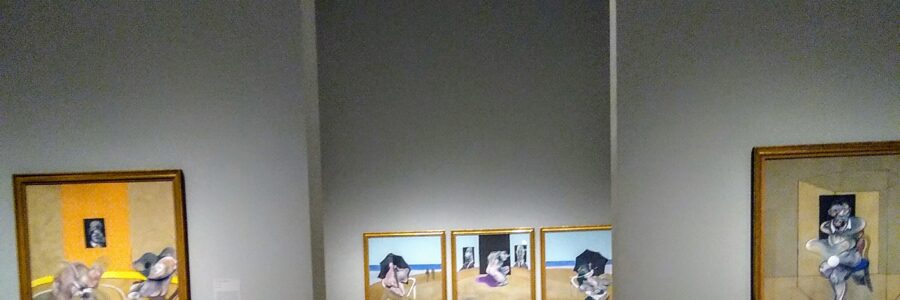
Museum of Fine Arts Houston Presents Francis Bacon: Late Paintings
Exhibit to run through May 25, 2020
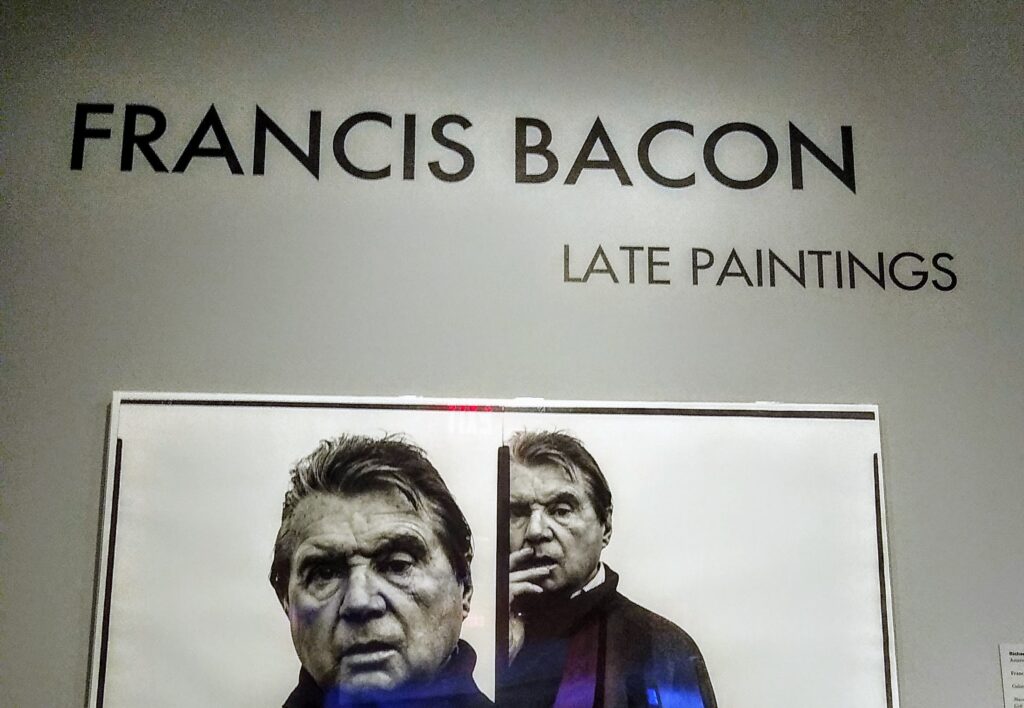
Organized by the Centre Pompidou, where it debuted in September 2019, this is the first in-depth museum consideration of Bacon’s production in his final decades, and the first museum exhibition of the artist’s work to be seen in the U.S. since the Metropolitan Museum of Art’s 2009 retrospective in New York.
“We are profoundly pleased to partner with the Centre Pompidou and their curator Didier Ottinger to bring to the United States this landmark survey of Francis Bacon’s late work,” said Gary Tinterow, Director, The Margaret Alkek Williams Chair, the Museum of Fine Arts, Houston. “This will be Houston’s first exhibition of the artist, and by focusing on the achievements of his final decades, we can best understand the resolution he brought to many of his long-standing concerns and his enduring commitment to the power of painting.”
ABOUT FRANCIS BACON
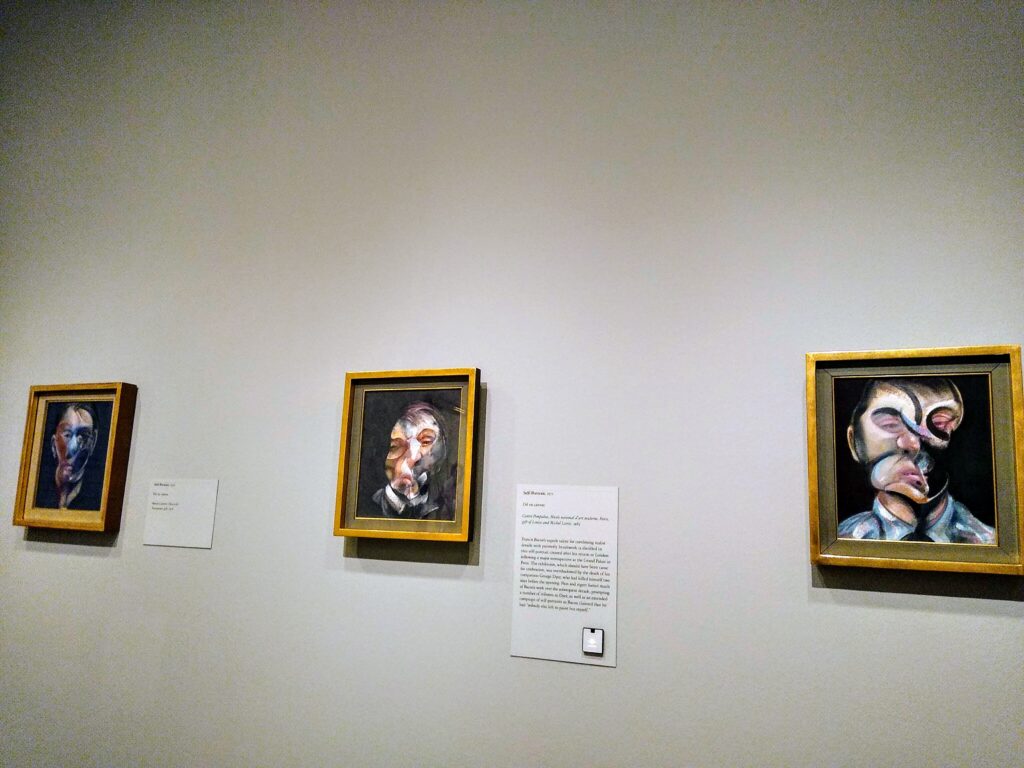
Francis Bacon (1909–1992), a leading figure in 20th-century British art: celebrated, scandalous, and profoundly influential, achieved a passionate summation of his career in the last two decades of his production, from 1971 to 1991, with paintings that demonstrated the timeless humanism and the enduring power that made him among the 20th century’s most compelling figures.
In 1971, he was at a turning point in his career as he prepared for a major retrospective mounted at the Grand Palais in Paris. The paintings that led up to this exhibition are among those featured in the Houston presentation, including Portrait of George Dyer in a Mirror, 1968, and Triptych, 1970.
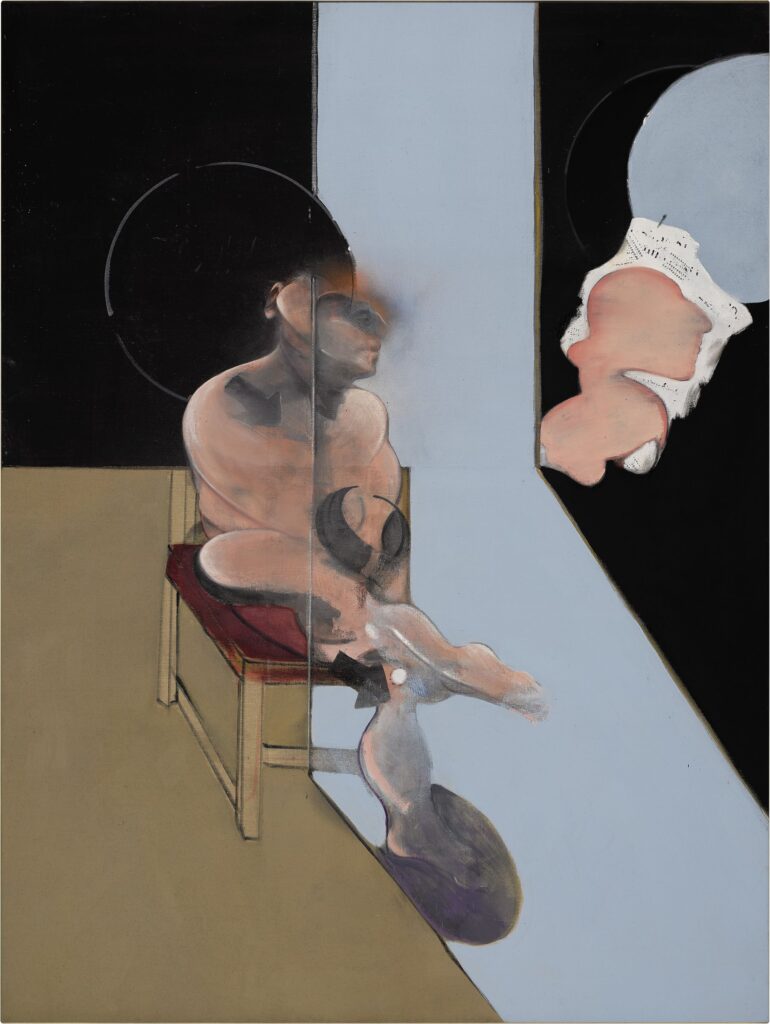
On October 24, 1971—two days before the opening of Bacon’s Grand Palais retrospective—Georges Dyer, his companion of many years, died by suicide in a Paris hotel. Over the decade that followed, Bacon repeatedly paid tribute to Dyer in an ongoing series of paintings.
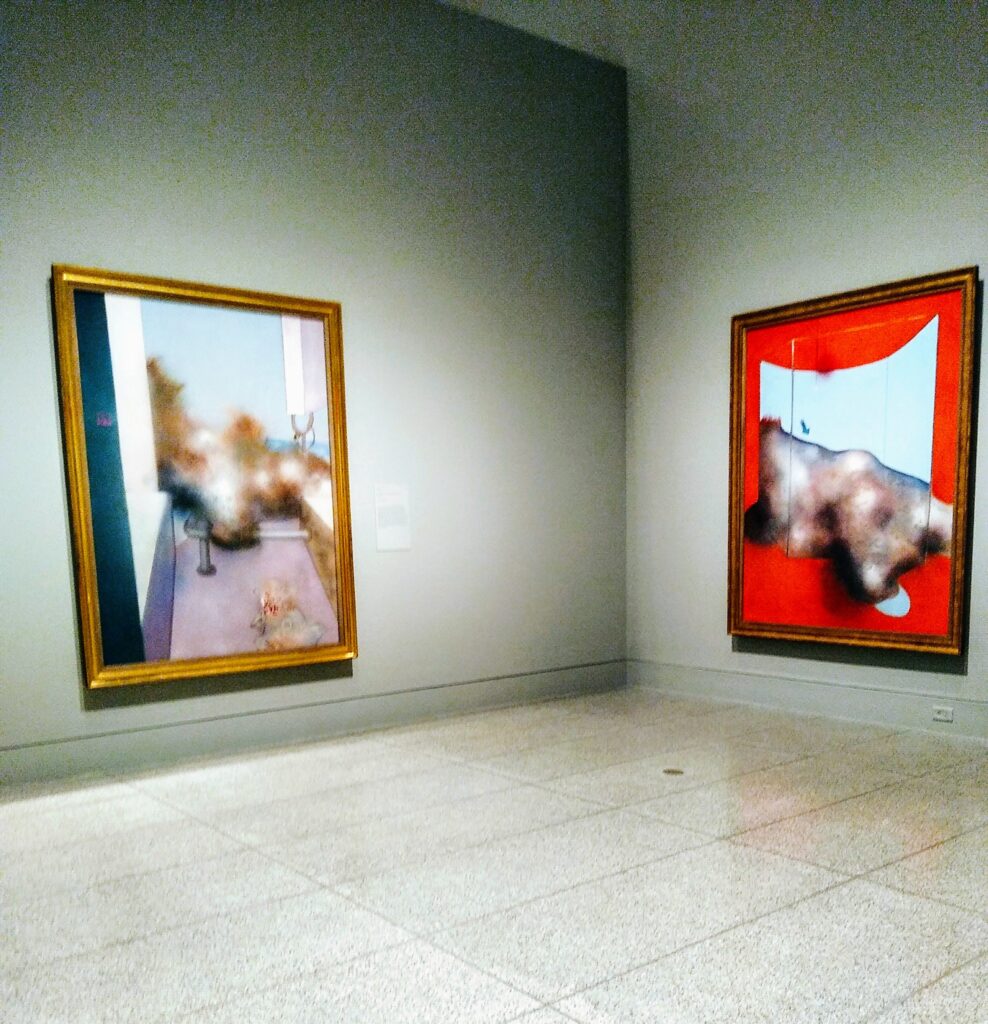
While Dyer remained Bacon’s most troubling muse, Bacon also branched out into new directions as well, including landscapes, a genre he had abandoned altogether between 1963 and 1978. His landscapes of the 1980s are particularly bold, reconciling the tension between abstraction and representation that animated the artist’s work across his career.
Bacon also introduced a fresh astringency to these late works, deserting his densely layered compositions for a new clarity of line and color, which can be seen in Street Scene (with Car in Distance), 1984, and Painting March 1985, 1985.
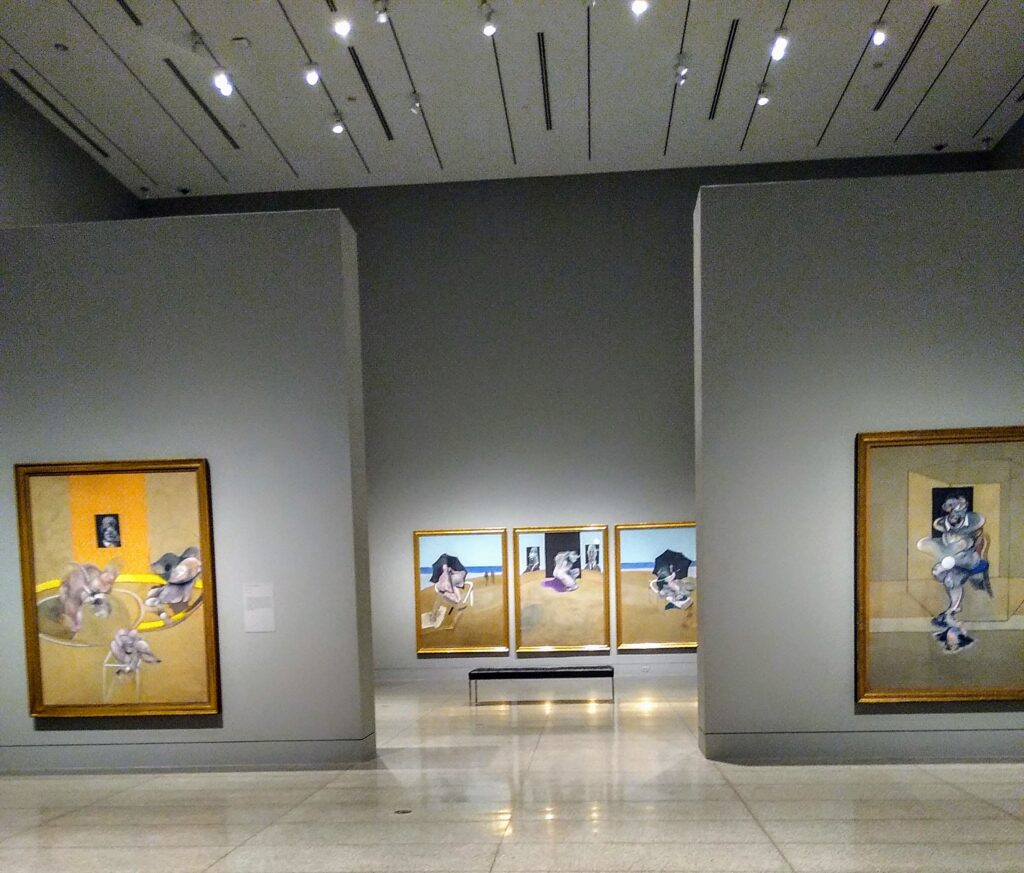
In Bacon’s final paintings, figures become all the more vulnerable, nearly consumed by the empty fields of raw canvas or flat color that surround them.
ABOUT THE EXHIBIT: • Please be advised that the exhibition includes nudity and mature subject matter
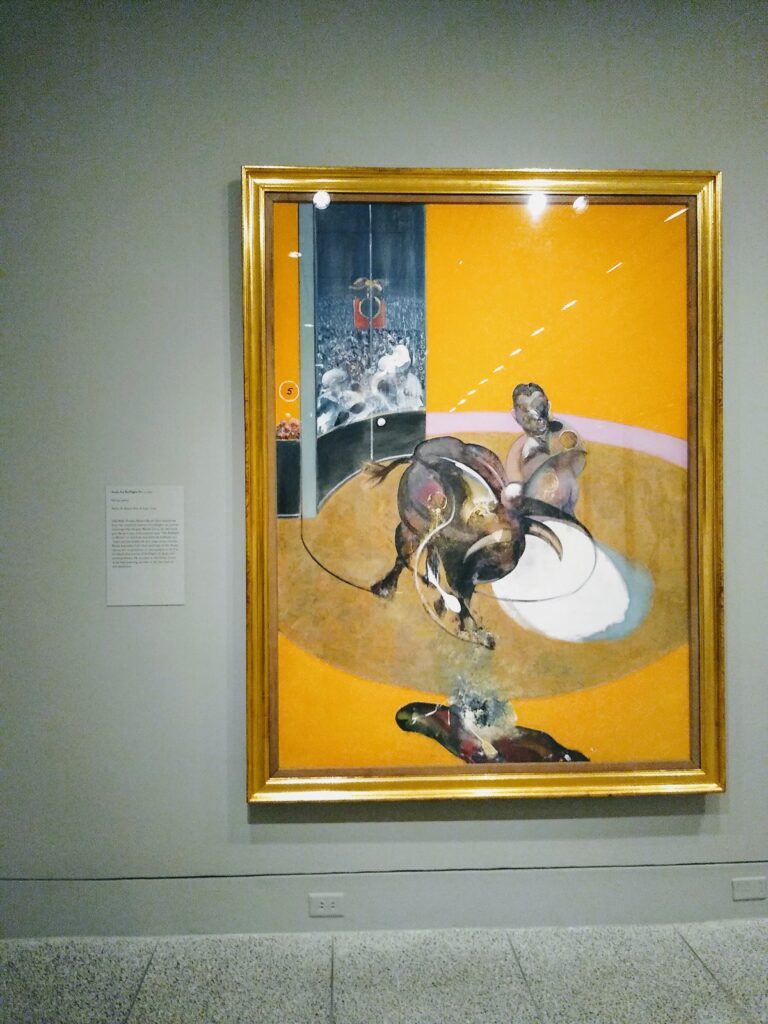
This exhibition from the Centre Pompidou in Paris features some 40 canvases, including an array of the artist’s monumental triptychs, which are among his most celebrated works. With significant new loans added to the Houston presentation, Francis Bacon: Late Paintings is the first museum exhibition to investigate Bacon’s late works in depth, as well as the first U.S. survey of Bacon’s paintings since the centenary retrospective organized by the Tate Britain and New York’s Metropolitan Museum of Art in 2009.
The installation will open with a series of self-portraits, introducing Bacon’s vivid presence at a time when he stated “[I have] no one else to paint.” Also on view will be portraits of his close contemporaries, including the poet Michel Leiris, who observed: “[Bacon’s paintings] help us, most powerfully, to feel the sheer fact of existence as it is sensed by a man without illusions.
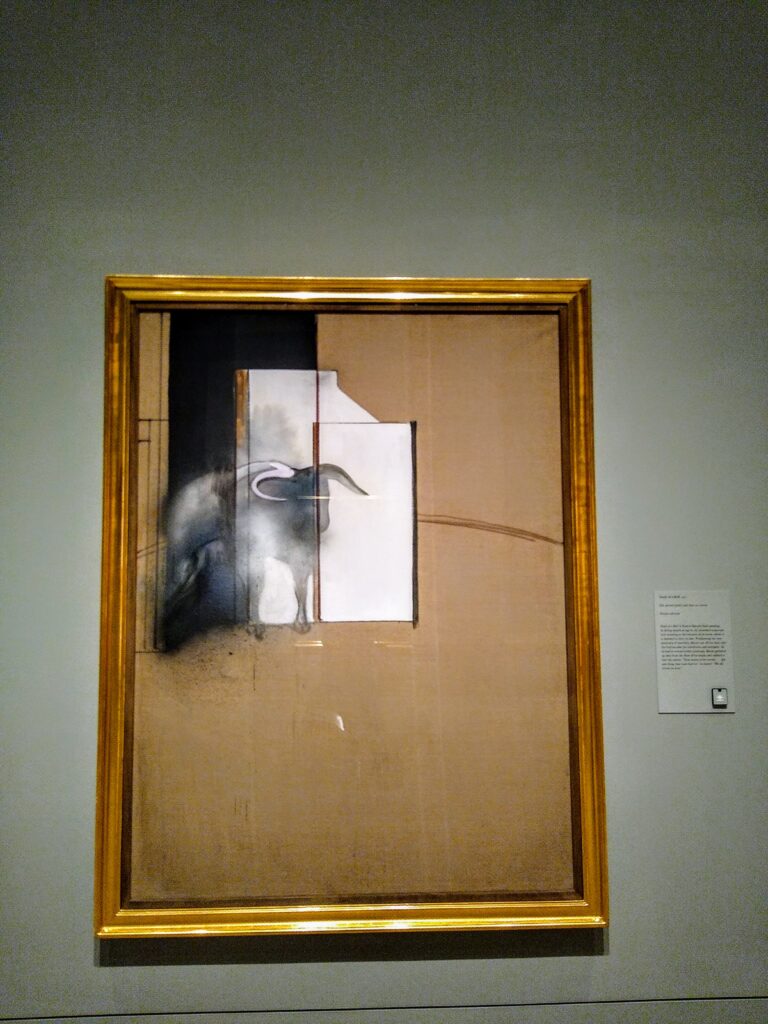
The exhibition pairs two of his most powerful triptychs dedicated to Dyer, the harrowing In Memory of George Dyer, 1971, and Triptych August 1972, 1972. Introducing one of the exhibition’s central themes, the immediacy of experience and the role of memory, these paintings also touch on Bacon’s literary sources, which ranged from the Greek tragedies of Aeschylus to the contemporary writings of T. S. Eliot and Jean-Paul Sartre.
Francis Bacon: Late Paintings will include his final triptych of 1991, as well as Study of a Bull, 1991, his last completed painting. Unseen for more than two decades, it resurfaced a few years ago from a private London collection and has been shown only once prior to this exhibition. In ill health and near the end of his life, Bacon unflinchingly faced mortality. “Dust seems to be eternal . . . the one thing that lasts forever,” he stated. “We all return to dust,” a sentiment underscored by the dust of his studio floor that he rubbed into this canvas.
“Bacon’s coming of age was bracketed by two world wars, and he found in the human form a vessel for beauty and tragedy,” said Alison de Lima Greene, the Isabel Brown Wilson Curator at the MFAH. “He celebrated the body’s corporeal physicality, while using his brush with greater and greater economy in his final paintings. We see him strip his subjects to their most essential features, laying bare their psychological truths.”
TICKET DETAILS:
For members, tickets are FREE. If not, Adult, $23, Seniors (65+), $18, Youth (13-18), $18 and Children (12 & under) free.
FOR MORE INFORMATION: www.mfah.org/exhibitions/francis-bacon-late-paintings.
Photo credit: V. Sweeten unless otherwise noted